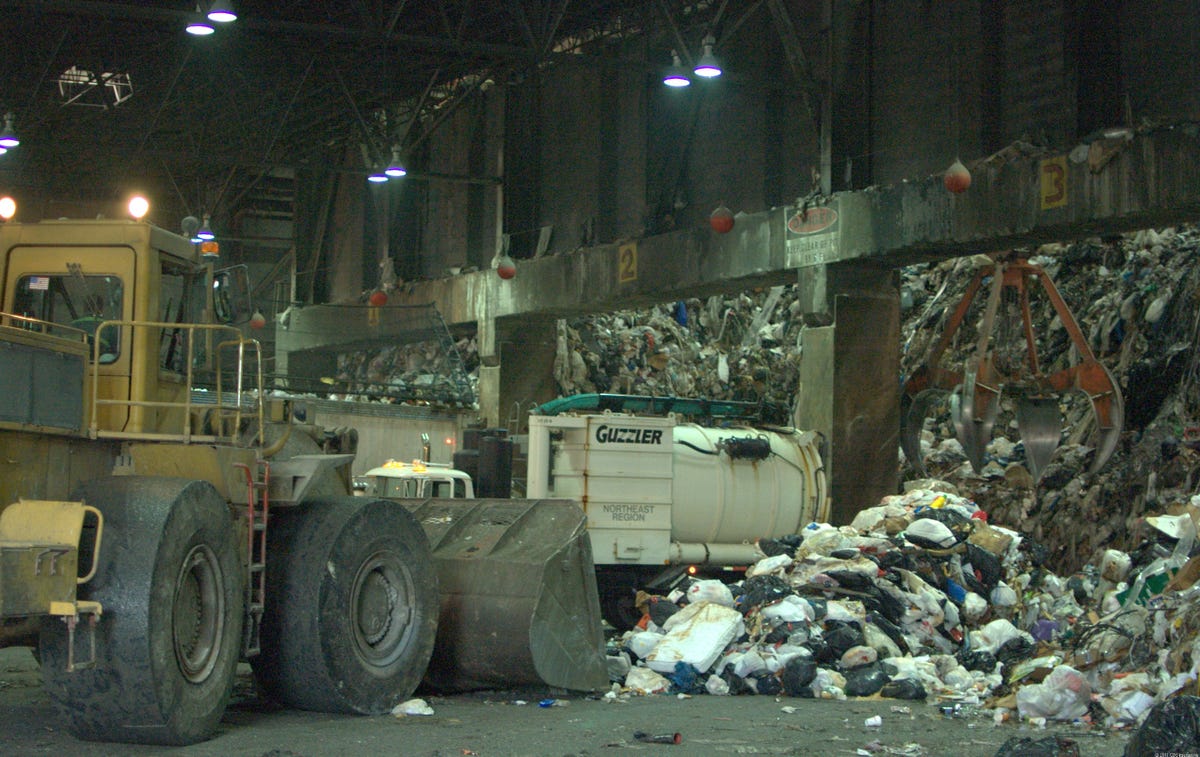Digging into waste-to-energy (photos)
Covanta Energy's waste-to-energy facility takes municipal solid waste and produces electricity in a less-polluting way than old-time incinerators.

Trash central
HAVERHILL, Mass.--What happens to your garbage that isn't recycled? If you live near Covanta Energy's waste-to-energy plant here, it's incinerated and turned into electricity. This plant treats about 600,000 tons of waste a year and turns it into 40 megawatts of continuous power to the grid. Waste-to-energy is more popular than landfills in some countries in Europe and some argue the U.S. should do more waste to energy.
See related article: Waste to energy: Green or greenwash?
Control room
Facility manager Joe Becker shows the control room at Covanta Energy's waste-to-energy plant. The key to controlling air emissions is to have efficient burning, but the plant uses a number of other techniques to "scrub" pollutants out of the flue gases. The plant operates like other fossil fuel plants which create steam through combustion and then send the steam through a turbine to generate a steady flow of power.
Peering into boiler
Here controllers can both watch what's happening as the waste is fed into the boiler and watch the incineration. The top temperature of the boilers is about 2,000 degrees.
Waste-to-energy diagram
This drawing shows the innards of a modern waste-to-energy plant. Municipal solid waste is chopped up as its fed into the boiler, where the combustion takes place. To reduce air pollutants, the plant recirculates the combustion air and sprays a lime and water into the flue gas, among other things. At the end, a series of bags (at right) capture particulates. This plant is able to operate at 80 percent below EPA limits on air pollutants and reduce the volume of trash by about 80 percent. Metals are recycled, too.
Landfill
The Covanta Energy location used to be a landfill but was converted into a waste-to-energy facility in the 1990s. The remaining ash from the plant is stored in this lined landfill. To get a sense of how high these mountains are, you can see a crane working on the right. This site also generates power by burning landfill gas, methane, into a turbine. The company is also looking at installing flexible solar panels on site to generate more power.

